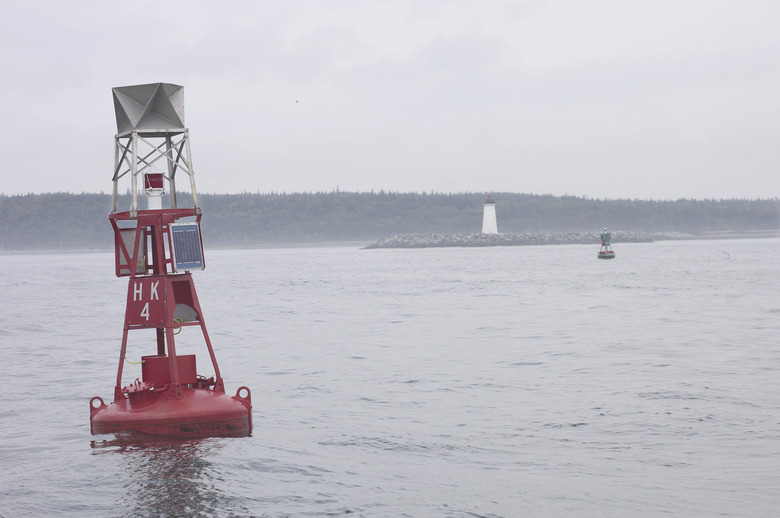How To Tell If An Object Will Sink Or Float
Whether an object sinks or floats depends on the density of the object and the fluid in which it is immersed. An object that is denser than a fluid will sink in the fluid while an object that is less dense will float. A floating object is said to be buoyant. The classical Greek inventor Archimedes was first to understand that buoyancy is a force and stated so in an important principle that bears his name. Archimedes' Principle states that any object immersed in or floating in a fluid is buoyed up by a force equal to the weight of displaced fluid.
Iron Ball in Water
Step 1
Consider an iron ball of volume 1 cc (cm-cubed) immersed in water. Find the densities of iron and water from tables in a chemistry handbook or textbook.
Step 2
Note that the density of iron (7.87 g per cm-cubed) is much higher than the density of water (1 g per cm-cubed.)
Step 3
Determine the buoyant force acting on the iron ball by multiplying the density of water by the displaced volume of water: 1 gram / cm-cubed x 1 cm-cubed = 1 g. The iron ball weighs 7.87 g, which is greater than the buoyant force, and therefore the iron ball sinks.
Helium Balloon
Step 1
Consider a balloon that contains 10,000 cubic feet (ft-cubed) of helium gas. Near the Earth's surface and at a temperature of 68 degrees Fahrenheit, the density of helium is about 0.02 pounds (lbs) per foot cubed (ft-cubed), and the density of air is about 0.08 lbs per ft-cubed.
Step 2
Calculate the weight of displaced air, as follows: 10,000 ft-cubed x 0.08 lbs /ft-cubed = 800 lbs. Calculate the weight of helium in the balloon: 10,000 ft-cubed x 0.02 lbs / ft-cubed = 200 lbs.
Step 3
Note, according to Archimedes' principle, that the air exerts a buoyant force of 800 lbs on the balloon. Because the helium in the balloon weighs only 200 lbs, the balloon will rise up if the total weight of balloon and equipment is less than the difference between the weight of air and the weight of helium, which is 600 lbs. As the balloon rises, the weight of displaced air decreases due to decreasing air density. The balloon will stop rising when its weight is balanced by the buoyant force of the air.
Cite This Article
MLA
Merry, Michael. "How To Tell If An Object Will Sink Or Float" sciencing.com, https://www.sciencing.com/tell-object-sink-float-8788557/. 24 April 2017.
APA
Merry, Michael. (2017, April 24). How To Tell If An Object Will Sink Or Float. sciencing.com. Retrieved from https://www.sciencing.com/tell-object-sink-float-8788557/
Chicago
Merry, Michael. How To Tell If An Object Will Sink Or Float last modified March 24, 2022. https://www.sciencing.com/tell-object-sink-float-8788557/

